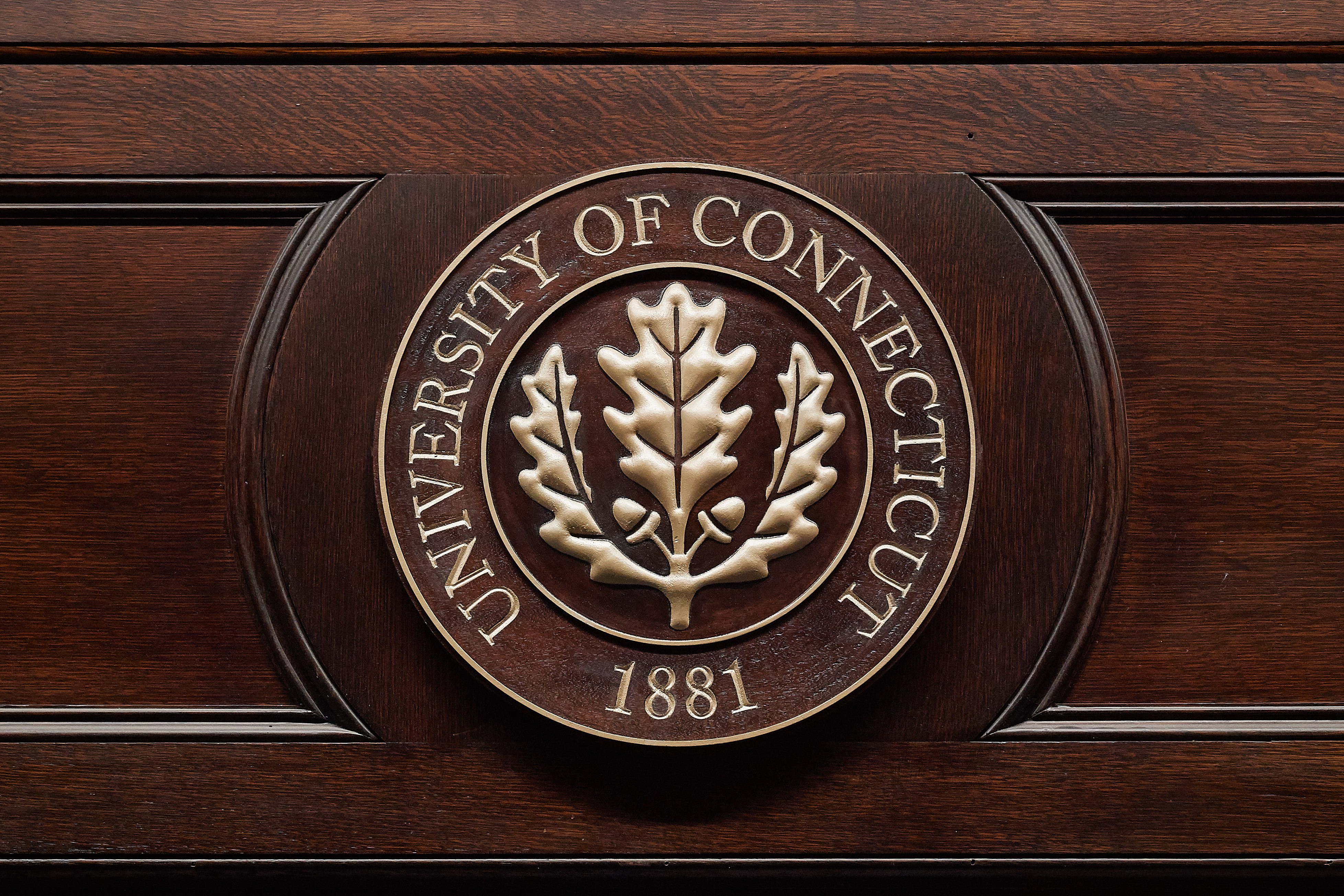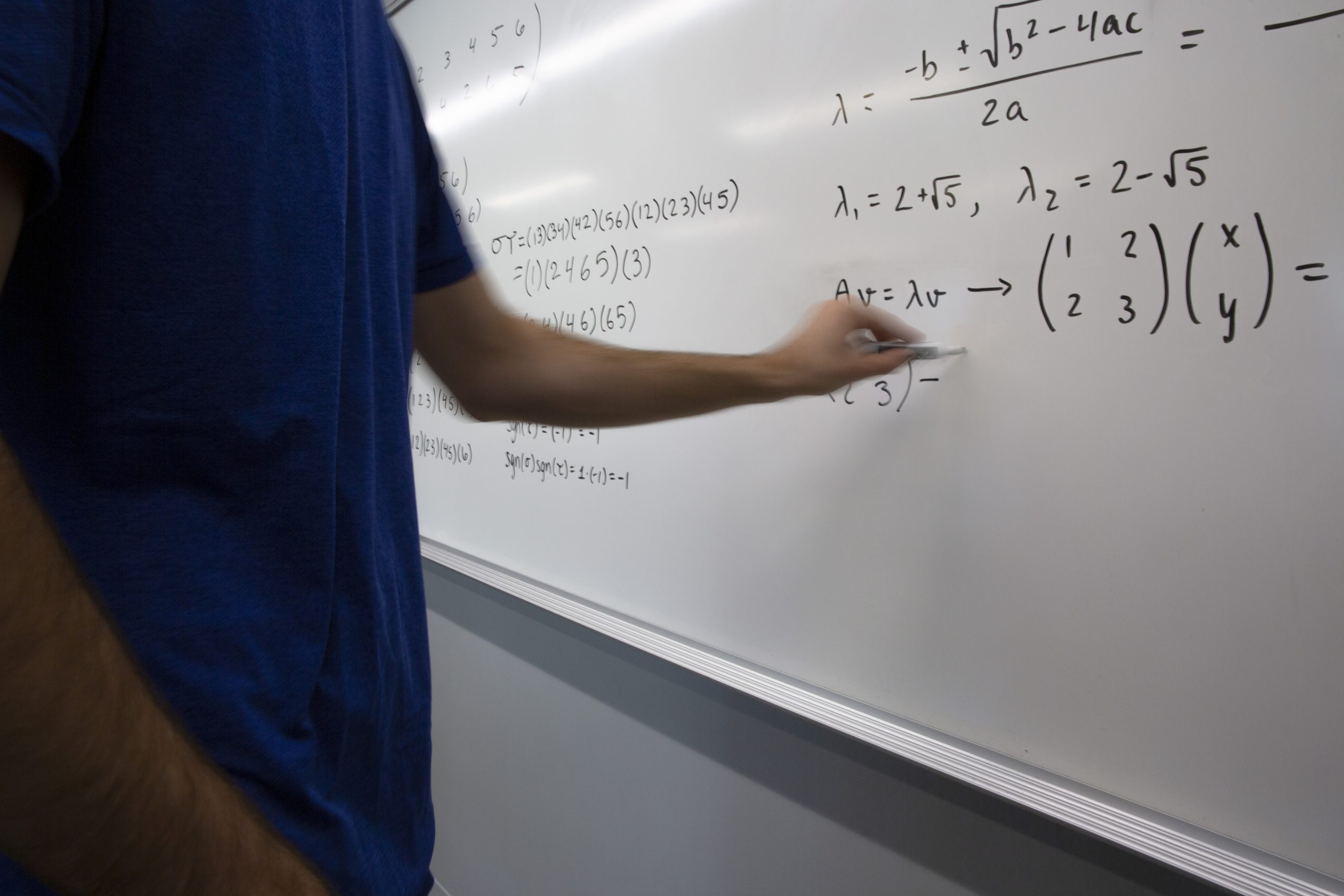The UConn Board of Trustees on Wednesday adopted temporary FY21 spending plans for UConn Storrs/regionals and UConn Health, seeking to provide structure for the coming year’s finances amid revenue uncertainties that have created the largest projected deficit in UConn’s history.
The global COVID-19 pandemic’s effects have been felt throughout all corners of UConn since early spring and are expected to continue well into fall, making it difficult for University leaders to accurately predict FY21 revenue from enrollment, patient care, auxiliary services, state aid, and other sources.
With those uncertainties in mind, the deficit at UConn Storrs/regionals is expected to range from $47 million to $129 million for FY21; at UConn Health, it is estimated to fall between $115 million and $188 million.
Trustees approved a temporary FY21 spending plan of $1.5 billion Wednesday for the Storrs and regional campuses, and University leaders will report back to the board quarterly with updated revenue projections and deficit-mitigating actions.
For UConn Health, trustees approved a temporary six-month spending plan of $645.4 million – half of the anticipated full-year $1.3 billion total – with UConn Health leaders returning in December to present updated patient revenue figures and other information so a spending plan can be set for the fiscal year’s final six months.
Scott Jordan, UConn’s executive vice president for administration and chief financial officer, told trustees in a detailed presentation that at UConn Storrs and on the regional campuses, operating revenues will very much depend on the ability to reopen for in-person instruction; to maintain enrollment, including from international students; and to maintain student participation in the housing and dining programs.
At the same time, UConn is drafting plans to reduce density in classrooms and residence halls as physical distancing measures, and offering students the option of taking some or all of their classes online to reduce in-person interactions.
The University is also considering lowering fees for online students to more closely match the services provided — such as for on-campus transportation and the Student Recreation Center – as a matter of equity, and also to create an incentive for students to choose online courses to help reduce campus density. Revenue losses from those fee adjustments would also have to be considered in the spending plan’s larger context.
And while emphasizing that UConn is immensely grateful to Gov. Ned Lamont and the Connecticut General Assembly for their continuing support of the University, Jordan also noted that given the state’s fiscal uncertainty, it remains possible that the state’s block grant and fringe reimbursement could also be reduced.
UConn was projected to operate with a surplus before the pandemic, but the annual costs of contributing toward reducing statewide unfunded pension liabilities and paying for increasing fringe benefit rates – which the University doesn’t control – erased them.
UConn has been trying to address it to reduce the impact on its research and clinical competitiveness. Those financial pressures were exacerbated when the pandemic hit and UConn Health – which gets almost half of its revenue from patient care — needed to halt elective surgeries worth more than $100 million in potential revenue to focus on COVID-19 patients.
Dr. Andrew Agwunobi, UConn Health’s chief executive officer and UConn executive vice president for health affairs, said at one point, the health center was losing just over $1 million per day while treating the coronavirus patients and halting all other surgeries and non-urgent procedures. Had the pandemic not occurred, UConn Health was on track to end FY20 about $7 million in the black.
In addition this spring, UConn Storrs/regionals issued more than $30 million in pro-rated student refunds of housing, dining and parking fees, of which only $10 million was covered by federal CARES Act funds. The University has had to absorb the remaining $20 million.
Some options that could be considered to close the spending plan revenue gaps anticipated in FY21 include:
– Seeking new revenue through entrepreneurial programs and the expansion, consolidation and modernization of auxiliary services, such as housing, dining, bookstore, restaurant, and conference services.
– Reviewing academic programs to consider whether larger class sizes might be acceptable without compromising quality, and reducing or eliminating programs with low enrollment.
– Reducing the University’s annual subsidy to UConn Athletics by 25 percent, or about $10 million over the next three to five years. The division announced Wednesday that as part of its cost-savings measures, it will end four sports after the coming academic year: men’s cross country, men’s swimming and diving, men’s tennis and women’s rowing.
– Reducing labor expenses by deferring scheduled FY21 pay raises, and/or instituting furloughs, layoffs or a combination thereof. More than 56 percent of UConn’s expenses are related to payroll, and more than 90 percent of its employees are under collective bargaining agreements. Representatives of the unions representing faculty and staff have also been approached for discussions, although those employees’ wage and work conditions remain unchanged at this time.
Some mitigation measures are already under way, including planned furlough days and the cancellation of raises for most non-union managers at UConn Storrs and UConn Health.
As part of the cost-cutting, President Thomas Katsouleas told the managers that he and senior leaders will take 24 unpaid furlough days over the coming fiscal year, equivalent to a 10 percent pay cut; and that most non-union managers will take 12 days, equivalent to a 5 percent cut.
“If there is a light at the end of the tunnel,” Katsouleas told the managers in his letter, “it is that once the virus passes and we can resume full in-person operation, our student demand, faculty talent and alumni support have never been stronger. Moreover, we expect our student, philanthropic and research-based revenues to rebound.
“At this time, the value of a research residential university experience is more valuable than ever, given it serves as a hub for scholars creating and sharing new knowledge in real time, (and) can help students make sense of the world and empower them to improve it,” Katsouleas continued. “However, in the meantime, we are all seeking options to bridge to that time without making cuts that cause long-term harm.”
UConn Athletics also undertook a widespread review of its programs – a process that was occurring before the pandemic – and will be ending four team sports as part of its work to reduce the subsidy amount it receives from the University: men’s cross country, men’s swimming and diving, men’s tennis and women’s rowing.
Katsouleas said UConn will honor all current athletic scholarships for those who wish to continue working towards their degree at UConn, and is committed to providing guidance and support for those who wish to continue their academic and athletic career elsewhere.
“While this is a painful decision, it is in the best interest of the long-term viability of UConn athletics,” Katsouleas said Wednesday.
“Moving forward, we are certain that we will be well positioned to enhance the student-athlete experience, improve competitiveness in more sports, and continue to be a model for gender equity, diversity, and inclusion in intercollegiate athletics,” he said. “In doing so, we will continue to leverage the success and pride generated by our outstanding Huskies for an even stronger UConn community.”
UConn Athletics Director David Benedict has also taken a voluntary 15 percent pay reduction and will not take any cash bonuses, the division said Wednesday.
The UConn Board also approved a $315 million FY21 capital budget for the University. Mostly financed by $260 million in state-supported bonding under the UCONN2000 / NextGen Connecticut program, capital funding for construction projects cannot be moved elsewhere in UConn’s spending plan to cover operating costs, mitigate deficits, or pay academic salaries or similar expenses.
Of the $315 million capital budget approved Wednesday for FY21, about 86 percent will go to active construction of science and related projects under the Next Generation Connecticut improvement program.
They include renovations to the Gant Science Building, construction of the STEM Research Center Science 1 Building in the Northwest Science Quad and its related infrastructure projects. The remainder of funds will support high-priority deferred maintenance projects.
Construction on the Northwest Science Quad projects accomplishes the simultaneous goals of assisting in the state’s economic recovery from the COVID crisis by creating and preserving construction jobs, while also continuing progress toward UConn’s goal of doubling research.
In briefing the Board of Trustees, the University’s administration acknowledged that the COVID crisis creates some risk for its capital program, including potential supply chain disruption, and delay if workers are unable to work due to illness. However, to date, such disruptions have been minimal on active campus projects.



